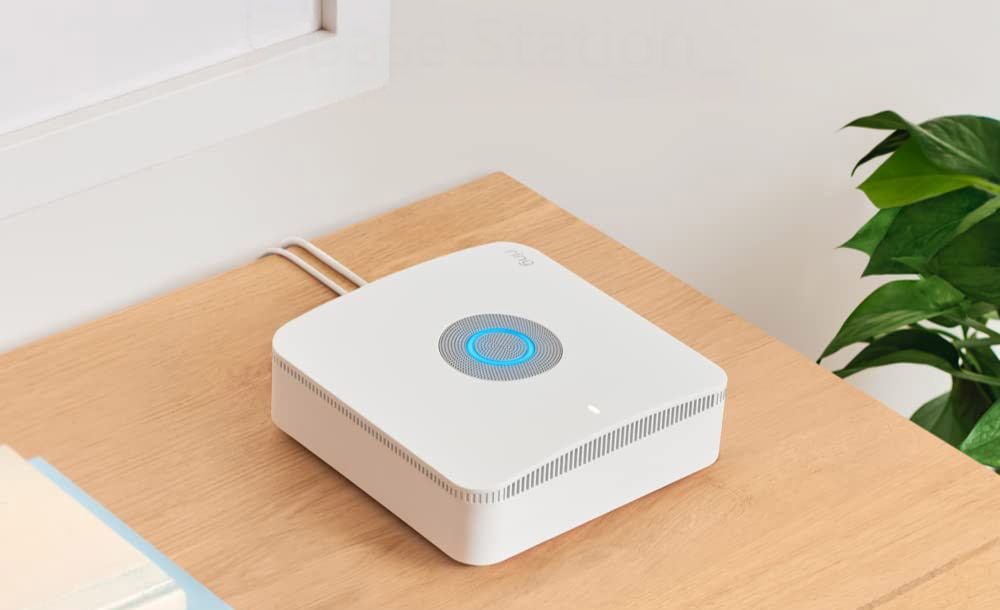Can Ring Doorbells Record Video Locally?

Ring doorbells are popular for a reason—they’re easy to set up and give you a quick way to see who’s at the door, whether you’re home or not. I’ve used a few different Ring models myself, and I get why people like them. Once you get one installed, though, you start thinking about how it actually works behind the scenes.
One of the most common questions I hear is about recording. People want to know if they can store video clips locally without paying for a subscription or saving it all in the cloud.
What Recording Options Does Ring Offer by Default?

When I first got my Ring doorbell, I thought it would just save the videos somewhere automatically. But it doesn’t quite work like that. Out of the box, you can view a live feed anytime, but Ring doesn’t save anything unless you sign up for their Ring Protect Plan. Without a plan, you only get live video—you can’t go back and watch what happened earlier. That caught me off guard.
If you do get the subscription, Ring stores your videos in the cloud. You can check clips from motion events, missed rings, or anything you set it to record. The clips stay online for a set number of days depending on your plan. That’s the default setup for all Ring doorbells, whether they’re wired or battery-powered.
👉 Related reading: Best Ring Doorbells in 2025
Does Ring Allow Local Storage?
The short answer is—Ring doesn’t let you do that by default. Most Ring doorbells don’t have any ports or slots for a memory card or USB drive. Everything is set up to work with their cloud system.
Even if your doorbell is hardwired, that doesn’t change the storage options. Ring still sends the footage to the cloud, not to a device you control. That’s just how the system works.
That said, some people look for workarounds. A few try screen recording apps or smart home hubs to get around the limits, but Ring’s system isn’t designed to support that. Most of those tricks are unreliable or against their terms of service. I’ve tested a few just out of curiosity, and I wouldn’t recommend them.
Ring built their products around cloud recording, and that’s where your videos go unless you use one specific setup called Ring Edge.
Recording Locally With Ring Edge
Ring Edge is the only official way to record Ring doorbell or camera footage locally. It doesn’t work with just any setup—you’ll need all of the following:
- Ring Alarm Pro Base Station
- Ring Protect Pro subscription
- Compatible microSD card (up to 512GB)
- eero Wi-Fi network (must be managed by the Alarm Pro)
What Is Ring Edge?

Ring Alarm Pro Base Station
Ring Edge is a feature that lets certain Ring doorbells and cameras record video locally instead of sending everything to the cloud. It works with the Ring Alarm Pro Base Station, which processes and stores video clips on a microSD card inside the base. This setup means your recordings stay in your home rather than being uploaded to Ring’s servers. Ring Edge gives you more control over your footage, especially if you want to avoid cloud storage or internet outages. It only works with select devices, and you need to meet a few setup requirements to use it.
Ring Edge doesn’t store anything on the doorbell itself. Instead, the Alarm Pro acts as the brains of the system. It processes and saves the video clips to a microSD card that you insert into the base station. I used a 128GB card during testing, but you can use cards up to 512GB if you want more space. Just make sure it’s from a brand Ring supports—SanDisk, Samsung, or similar.
The Wi-Fi setup matters here. Your Ring cameras and doorbells must be connected to the same eero network that the Alarm Pro controls. If you try to use a different router, Ring Edge won’t work. I had to move my doorbell off my old network and onto eero before the system would recognize it.
Once everything’s in place, you turn on Ring Edge in the Ring app and select which devices should use local storage. You can also enable encryption for extra security, so even if someone removes the SD card, they can’t view your videos.
👉 Related reading: Eero Pro 6 vs Eero 6 Plus: Which Is Best?
This setup does cost more and takes some effort, but it’s the only supported way to store Ring videos without using cloud storage. For people already using Ring Alarm Pro and eero, it’s a solid option. For others, it may not be worth the extra hardware and subscription unless local control is a top priority.
What About Other Doorbells That Support Local Storage?
If local storage is a must for you, Ring might not be the best fit. I’ve tested a few other brands that offer built-in options to save videos right on the device or to a memory card. Eufy is one I like a lot. Their doorbells can save clips to local storage without a monthly fee, and some models include a base station with built-in memory. No cloud needed unless you want it.
There’s also Reolink and Arlo. These brands focus more on local recording and sometimes let you connect the doorbell to an NVR or microSD card. The setup isn’t always as easy as Ring, but you do get more control over where your footage goes. That matters to a lot of people, especially if they want to keep things private or just avoid another subscription.
👉 Related reading: Best Doorbell Camera for Homeowners
If you’re comparing, just know that Ring is really built around cloud use. Most other brands that support local storage take a more DIY approach, so you’ll have to handle more of the setup yourself. I still think they’re worth looking at if saving your videos offline is important to you.
| Product | Local Storage Option | Subscription Required | Notes |
|---|---|---|---|
| Ring (most models) | None by default | Yes (for recording) | Only live view without a plan; cloud storage only unless using Ring Edge |
| Ring + Ring Edge | Yes (via Alarm Pro Base) | Yes (Protect Pro plan) | Requires Alarm Pro Base, eero Wi-Fi, and supported microSD card |
| Eufy Doorbells | Yes (internal or base station) | No | Many models offer built-in storage or base station with memory |
| Reolink Doorbells | Yes (microSD or NVR) | No | Some models support SD cards or network video recorders |
| Arlo Video Doorbell | Yes (with Arlo SmartHub) | No (local) / Yes (cloud) | Needs SmartHub for local; cloud option available with plan |
Final Thoughts

If you’re using a Ring doorbell, the system is mostly built around cloud storage. Without a subscription, you don’t get any saved recordings—just live view. For most users, that means paying monthly if you want access to past videos.
The only way Ring offers local storage is through the Ring Alarm Pro and Ring Edge setup, and even then, you still need their highest-tier subscription. It works well once it’s up and running, but it’s a bigger investment and not the simplest option.
If you really want to avoid cloud storage or monthly fees, I’d say look into other brands like Eufy or Reolink. I’ve used both and had good results with local recording. They give you more flexibility without needing extra services.
In the end, it comes down to what you’re looking for—convenience, control, or both. I’ve tried several systems over the years, and there’s no one-size-fits-all. Just be sure to check what each doorbell can actually do before you buy. A lot of the features sound the same, but how they store and access footage can be really different.
Continue reading: